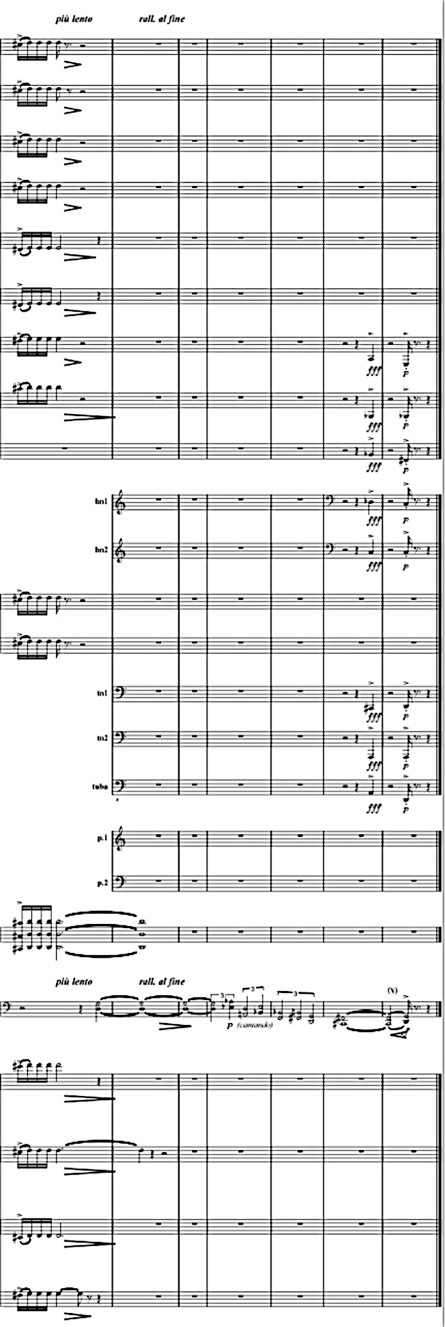Jukka Tiensuu: Oire, Cello Concerto (2014)
Duration: 24 minutes
Orchestration: 2(picc),2,3(2:bcl, 3:bcl/Cbcl),2(2:Cbn)/2,2,2,1/2perc,Pf/Str.
Commissioned by Tampere Philharmonic
First performance:
28th November, 2014 Tampere
Tampere Philharmonic, Anssi Karttunen, cello, Erkki Lasonpalo, conductor
Title and movements:
Oire (Symptom)
1. Aihe (Subject)
2. Kaiho (Yearn)
3. Vaihe (Phase)
4. Viehe (Lure)
It is a principle of Jukka Tiensuu's to never describe or explain his pieces. He chooses his titles to be evocative yet ambiguous. The titles of this piece are words that exist in Finnish. One may find some connection to the music if one wants, or just enjoy the images they provoke. The rough translations into English are: Oire: Symptom, Aihe: Subject, Kaiho: Yearn, Vaihe: Phase, Viehe: Lure. I think the best explanation for the titles is the history behind the piece.
If Oire really is a Symptom, it would be a symptom of something very slow and patient. Jukka himself reminded me that the first time I asked him to write a cello concerto for me was in 1986 at the Viitasaari Festival (Subject). His cryptic answer then was "We can talk about it". We did talk about it, every few years, for 28 years (Yearn). Each time his conclusion was that we needed to talk about it some more, that maybe the time wasn't just right quite yet. Meanwhile we performed together and he wrote several pieces for cello which I premiered - Plus II for clarinet and cello, oddjob for cello and electronics and bLeulein for solo cello (Phase). He also used cello in many chamber pieces, so much so that he recently calculated that the cello was the instrument he had most written for. In fact, it turns out that the work he wrote for his graduation was a small concerto for cello and ensemble, a fact that had escaped even me earlier.
When Jukka was commissioned to write a solo cello piece, Balzo, for the Turku Cello Competition in 2004, he mentioned to me that it might just be the trigger to make the Cello Concerto idea more appealing. Some years later I spoke to Hannu Lintu, then the principal conductor of Tampere Philharmonic that we should make sure to create the conditions for this (Lure). Tampere Philharmonic commissioned it and now we finally have given the first performance of a piece 28 years in the making. I am looking forward to the next 28 years nursing this "Symptom".
A.K.
Reviews:
Aamulehti 30.11.2014
Distilled wisdom and enchanting temperaments.
Tiensuu's concerto appeals. Young conductor makes a breakthrough.
Even if the composer Jukka Tiensuu never talks about his music he makes his players "speak" all the more.
The soloist of the new concerto questions, wonders, thinks, searches and maybe even finds something during the 25 minute long timeless piece.
Once again the soloist, Anssi Karttunen left us in awe with his unquestionable mastery of the language of new music. From the high harmonics, dizzying glissandos and the screeching jolting phrases he conjured a natural flow, which the orchestra, proficiently conducted by Erkki Lasonpalo answered as an important partner.
The piece begins with the frenetic shouts of double basses and brass, placed at the back of the stage, which the soloist comments with delicate and open questions. As the Concerto progresses, the worlds of the soloist and the orchestra approach each other so that in the end Orchestra no longer appears as the opposite of the soloist, but the soulmate and fellow traveller of the world.
Maybe the most impressive movement of the Concerto is Kaiho (Yearn), the whispering expression of the movement reminds of oriental wisdom and purity. In fact the whole Concerto is impregnated by formidable maturity and tranquility. We are beyond any demonstration.
Tiensuu has since long given names to his pieces which are short and musical Finnish words. They start vibrating in the listeners head already before a note has been played. The Cello Concerto Oire (Symptom) has four movements entitled Aihe (Subject), Kaiho (Yearn), Vaihe (Phase) and Viehe (Lure), all full of mystic power which wakes ones imagination. ...
Harri Hautala


